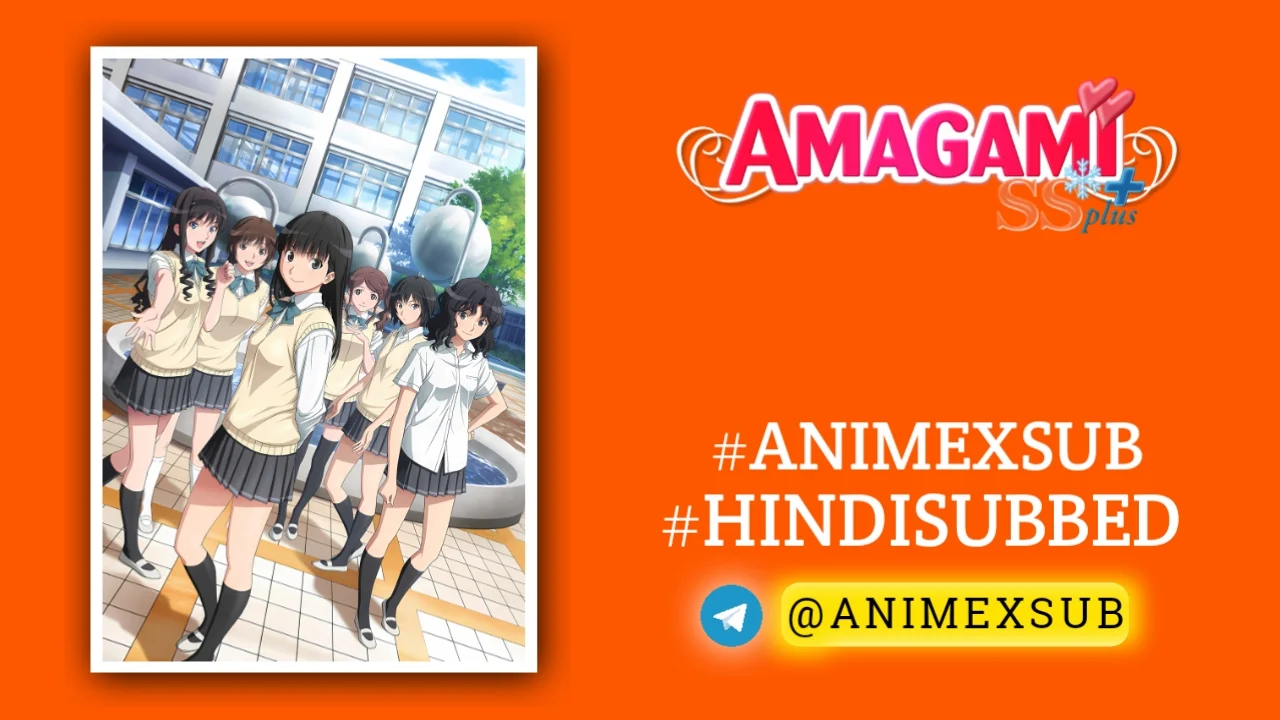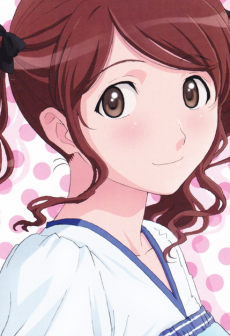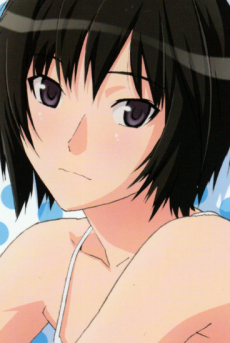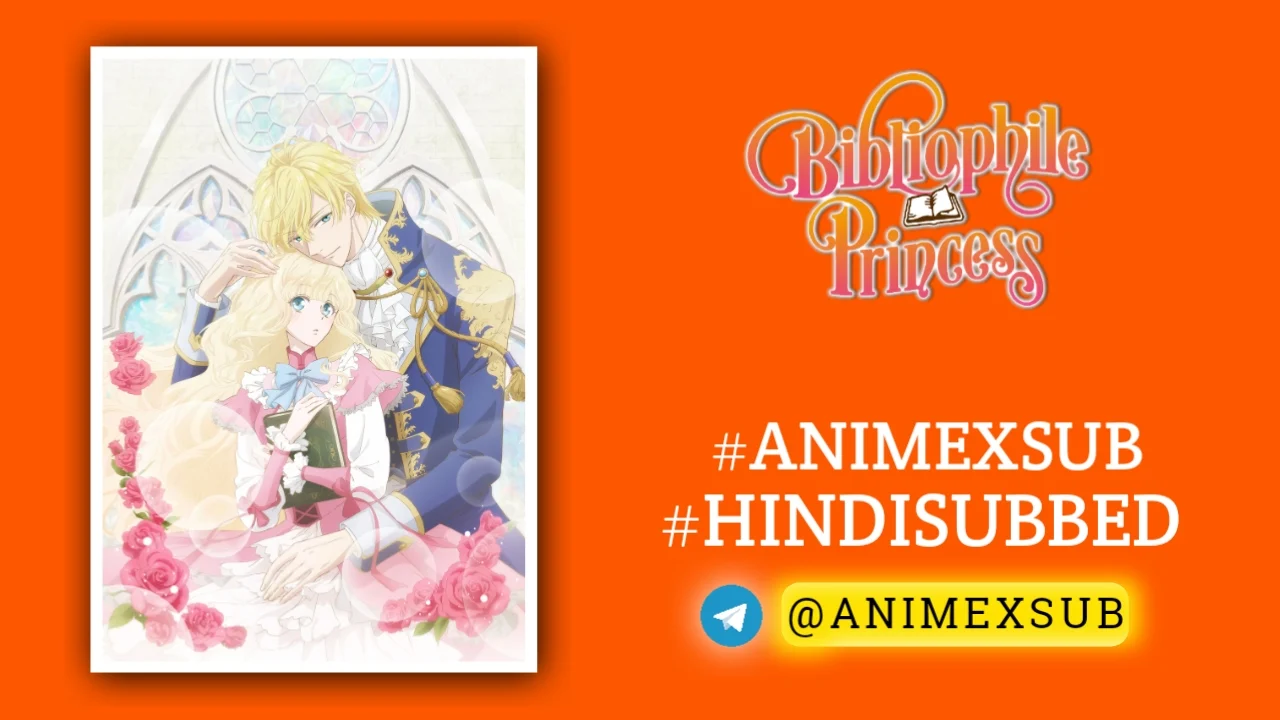
Amagami SS Season 2 Hindi Subbed [13/13] | Amagami SS+ plus Hindi Sub!!

Amagami SS+ plus
Synopsis
The second season of Amagami SS. The girls return, and this time the series examines what the future with each of his girlfriends would hold! If Junichi can handle a second go-round with Tsukasa, Rihoko, Ai, Kaoru, Sae, Haruka and even Risa is anyone's guess. To add to the fun, little sister Miya returns with her sneaky storyline as well! (Sentai Filmworks)
Characters
Amagami SS+ Plus: A Next-Level Exploration of Love’s Aftermath
“What happens after the confession?” This question, rarely addressed in romance anime, is the beating heart of Amagami SS+ Plus, the second season of the beloved Amagami SS. Released in 2012, this 13-episode continuation takes the omnibus format that made the first season a standout and elevates it into a profound, emotionally resonant exploration of relationships post-happily-ever-after. By diving into the complexities of sustaining love, Amagami SS+ Plus delivers a unique and powerful follow-up that redefines what a romance anime sequel can achieve. This article delves into why Amagami SS+ Plus is a next-level masterpiece, offering fresh insights, critical analysis, and a celebration of its innovative storytelling.
The Omnibus Legacy: Building on Season 1’s Foundation
Amagami SS (2010) broke ground with its omnibus format, adapting the PlayStation 2 dating sim by Enterbrain into six distinct four-episode arcs, each focusing on a different heroine—Haruka Morishima, Kaoru Tanamachi, Sae Nakata, Ai Nanasaki, Rihoko Sakurai, and Tsukasa Ayatsuji—paired with protagonist Junichi Tachibana. This structure allowed every heroine to “win” in her own timeline, sidestepping the harem genre’s typical indecision and delivering satisfying conclusions for fans of each girl. However, the first season left viewers craving more: what happens after the credits roll on these love stories?
Amagami SS+ Plus answers this call with surgical precision. Each heroine receives a two-episode arc (except for Miya Tachibana’s single-episode special), focusing on the challenges and growth in their relationships with Junichi after the initial confessions. This shift from pursuit to partnership is a bold departure from romance anime norms, which often end at the moment of mutual affection. By exploring the “what’s next,” SS+ Plus offers a rare glimpse into the realities of young love, making it a standout in the genre.
A Deeper Dive into Love’s Complexities
The genius of Amagami SS+ Plus lies in its refusal to treat love as a fairy-tale endpoint. Each arc tackles unique challenges that feel authentic and relatable, reflecting the messy, beautiful reality of relationships. Here’s a breakdown of how each heroine’s arc pushes the narrative to the next level:
- Tsukasa Ayatsuji (Episodes 1-2): The straight-laced class representative’s arc centers on her campaign for student council president, with Junichi as her vice-president. Their relationship faces external pressures from gossip and a manipulative rival, forcing Tsukasa to balance her public persona with her private vulnerabilities. This arc shines in showcasing Tsukasa’s duality—her “perfect” exterior versus her darker, more human side—while exploring how trust strengthens a couple under scrutiny.
- Rihoko Sakurai (Episodes 3-4): Fans of the first season were vocal about Rihoko’s arc ending on an ambiguous note, with her feelings for Junichi unrequited. SS+ Plus rectifies this with a deeply satisfying arc where Rihoko, now running the Tea Club with Junichi, finally confesses. The arc’s focus on her overcoming self-doubt and Junichi’s growing awareness of her as more than a childhood friend delivers the closure fans craved, making it a highlight for “Rihoko shippers.”
- Ai Nanasaki (Episodes 5-6): Ai’s arc tackles the strain of a long-distance relationship as Junichi prepares for college. Her insecurities about their future highlight the challenges of maintaining love across time and space. The arc’s emotional depth, coupled with a flash-forward showing their enduring bond, offers a poignant look at commitment and sacrifice.
- Kaoru Tanamachi (Episodes 7-8): Kaoru and Junichi’s trip together goes hilariously awry, filled with bickering and awkward moments. This arc excels in depicting the transition from friends to lovers, capturing the growing pains of a relationship built on familiarity. Their chemistry, laced with playful banter, makes this one of the most dynamic and relatable arcs.
- Sae Nakata (Episodes 9-10): The shy Sae faces skepticism from classmates who can’t believe she’s dating Junichi. Her arc, bolstered by an “eight years later” epilogue, showcases her growth from timid underclassman to confident partner. Narrator Jouji Nakata’s fourth-wall-breaking commentary adds a layer of charm, making this arc surprisingly impactful despite Sae’s polarizing reception in Season 1.
- Haruka Morishima (Episodes 11-12): Haruka’s arc takes the boldest leap, exploring her desire to marry Junichi. This serious turn, from engagement discussions to envisioning a future together, elevates her arc beyond the playful flirtation of Season 1. It’s a testament to the show’s willingness to push boundaries, addressing adult themes like marriage with sincerity.
- Miya Tachibana (Episode 13): The final episode, dedicated to Junichi’s sister, is a lighthearted celebration of sibling affection. While not romantic, it ties the series together by revealing the meaning of “Amagami” (gentle bite) and offering closure on Junichi’s past heartbreak. This episode’s playful tone and meta humor make it a delightful capstone.
By addressing real-world relationship dynamics—trust, communication, distance, and commitment—SS+ Plus transcends the typical romance anime’s focus on the chase, offering a mature and nuanced perspective.
Why Amagami SS+ Plus Is Next-Level
- Innovative Storytelling: The omnibus format remains a masterstroke, allowing each heroine’s story to stand alone while maintaining a cohesive narrative. Unlike traditional harem anime, SS+ Plus avoids melodrama and catfights, focusing on individual growth and couple dynamics. This structure respects the audience’s investment in each heroine, ensuring no one feels “left out.”
- Character Depth in Limited Time: Despite the shorter two-episode arcs, the writing (by Noboru Kimura and Touko Machida) deftly balances character development and plot progression. Each arc feels complete yet leaves room for imagination, a testament to the show’s pacing and emotional intelligence.
- Realistic Relationship Challenges: By focusing on the aftermath of confessions, SS+ Plus tackles issues rarely seen in romance anime, such as navigating societal judgment (Sae), overcoming past traumas (Junichi), or planning a future together (Haruka). This realism resonates with viewers who see their own relationships reflected in the characters’ struggles.
- Visual and Auditory Excellence: AIC’s animation, under Yoshimasa Hiraike’s direction, maintains the vibrant aesthetic of Season 1, with expressive character designs by Hiroaki Gohda. The soundtrack, featuring Azusa’s “Check My Soul” as the opening and “Confessions” as the ending, complements the emotional tone, while strategic use of silence amplifies key moments.
- Fan Service with Purpose: Unlike many dating sim adaptations that lean heavily on fan service, SS+ Plus uses it sparingly and meaningfully, ensuring it enhances rather than overshadows the story. For example, the hot spring episode (part of Miya’s arc) is played for laughs rather than gratuitous appeal, maintaining the show’s wholesome tone.
- Closure for Fans: The second season addresses fan criticisms of Season 1, particularly Rihoko’s unresolved arc. By giving each heroine a satisfying epilogue, SS+ Plus feels like a love letter to its audience, rewarding their emotional investment.
Critical Reception and Impact
Amagami SS+ Plus has been praised for its thoughtful continuation of the original series. Cubed3 rated it 7/10, noting that the epilogues feel like “appropriate expansions” rather than tacked-on endings, with Rihoko’s arc being a particular standout for resolving her Season 1 cliffhanger. MyAnimeList reviews highlight the series’ ability to deliver satisfying conclusions while maintaining the charm of the first season. However, some critics, like those on Anime-Planet, argue that the two-episode format limits character depth compared to Season 1’s four episodes, though they acknowledge the arcs’ emotional resonance.
The series’ impact lies in its influence on the romance genre. By proving that a sequel can explore post-confession dynamics without losing the magic of the original, SS+ Plus set a precedent for later omnibus-style anime like Yosuga no Sora and Photokano. Its focus on closure and character-driven storytelling makes it a touchstone for fans seeking more than fleeting romantic moments.
Why It’s a Must-Watch
Amagami SS+ Plus is a triumph of emotional storytelling, proving that romance anime can go beyond the confession to explore the challenges and joys of sustaining love. Its omnibus format, rich character arcs, and commitment to realism make it a unique and powerful addition to the genre. Whether you’re a fan of Haruka’s bold romance, Rihoko’s heartfelt confession, or Tsukasa’s complex duality, there’s something here for every romance enthusiast.
For those new to the series, watch Amagami SS first to appreciate the context, but SS+ Plus is the reward—a deeper, more mature exploration of love that feels both universal and personal. It’s not just a sequel; it’s a next-level reimagining of what romance anime can be.
Recommendation: Dive into Amagami SS+ Plus on platforms like Crunchyroll or via Sentai Filmworks’ Blu-ray collection. Pair it with a cozy evening and an open heart—you won’t be disappointed.
Sources: This article draws on reviews and insights from MyAnimeList, Cubed3, Anime-Planet, and the Amagami Wiki, critically analyzed to provide a fresh perspective.
Support Our Anime Community!
Love watching the latest anime? Help us keep uploading new episodes by join telegram channel ❤️
Join Now!
























